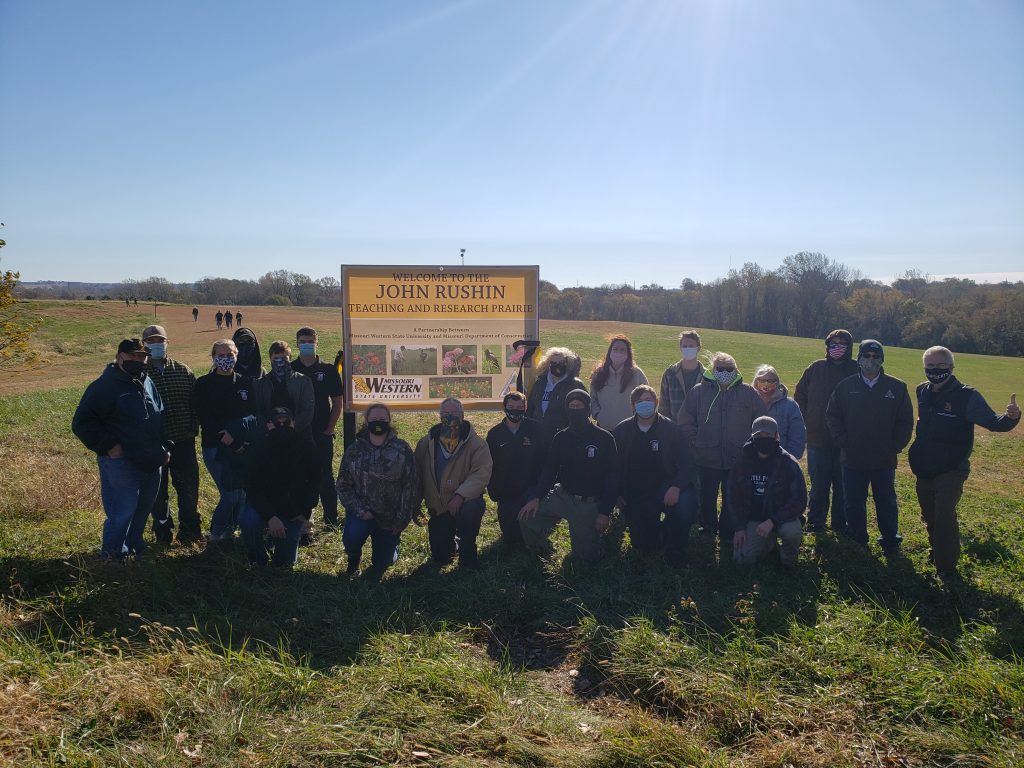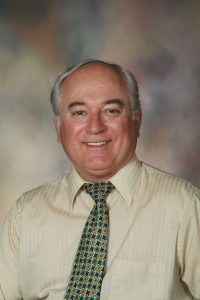
The John Rushin Teaching and Research Prairie was dedicated at Missouri Western Oct. 31.
Missouri Western is bringing back a piece of ecological history by restoring a small plot of prairie on campus. The John Rushin Teaching and Research Prairie was named after Dr. John Rushin, a biology professor for 33 years. In addition to teaching and working with thousands of students over his career, Dr. Rushin, now retired, also developed the award-winning wildlife conservation program and successfully lobbied to get the Northwest Regional Office of the Department of Conservation on the Missouri Western campus.

Dr. John Rushin
“We discussed several possible names for the prairie, but kept coming back to wanting to honor John,” said Dr. Mark Mills, chair of the Department of Biology. “His contributions to Missouri Western and this community were numerous and impactful.”
The John Rushin Teaching and Research Prairie, located on the east side of campus near 50th and Messanie, will allow students and community members the opportunity to view and experience many different wild species. There are currently about 150 species of prairie plants and plenty of birds, insects and invertebrates.
This prairie is unique to the area and a great opportunity for students at Missouri Western. The prairie is already in use by staff and students for labs such as ecology, animal behavior, plant classes and management strategies. It is predicted that more than 100 students will be impacted each year by the inclusion of this prairie resource on campus.
Dr. Rushin plans to continue to help the campus community by adding a learning garden for plants that can be found in the prairie. This will include plant species found in the prairie and plaques describing the plants. This will allow the St. Joseph community to be involved in learning about the prairie.
The plan to develop a prairie for Missouri Western, included in Missouri Western’s Master Plan in 2015, was given to Dr. Mills by a student in 2014. Though there were a few minor setbacks throughout the process, including possible location changes due to other potential land development opportunities, the original plot of land set in 2015 was the plot that was used to develop the prairie.
It takes around three to four years to start developing a prairie, and it takes around five to ten years to see changes – though a prairie will still not be fully developed in this time. This means that having a prairie on Missouri Western’s campus is a long-term process and will be an ongoing one in the years to come.
None of this would have been possible without the help of the Missouri Department of Conservation, especially Jeff Powelson, private land conservationist. The Missouri Department of Conservation helped move special resources to the prairie, including seeds for prairie plants and grasses. Though the prairie is an ongoing work in progress, it will influence the students of Missouri Western and the St. Joseph community far into the future.
– William Taylor, contributor
